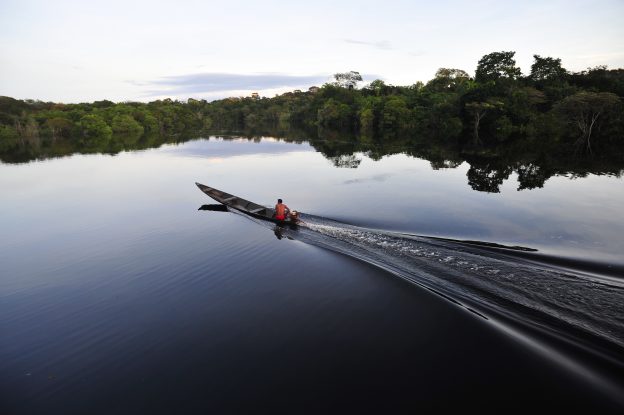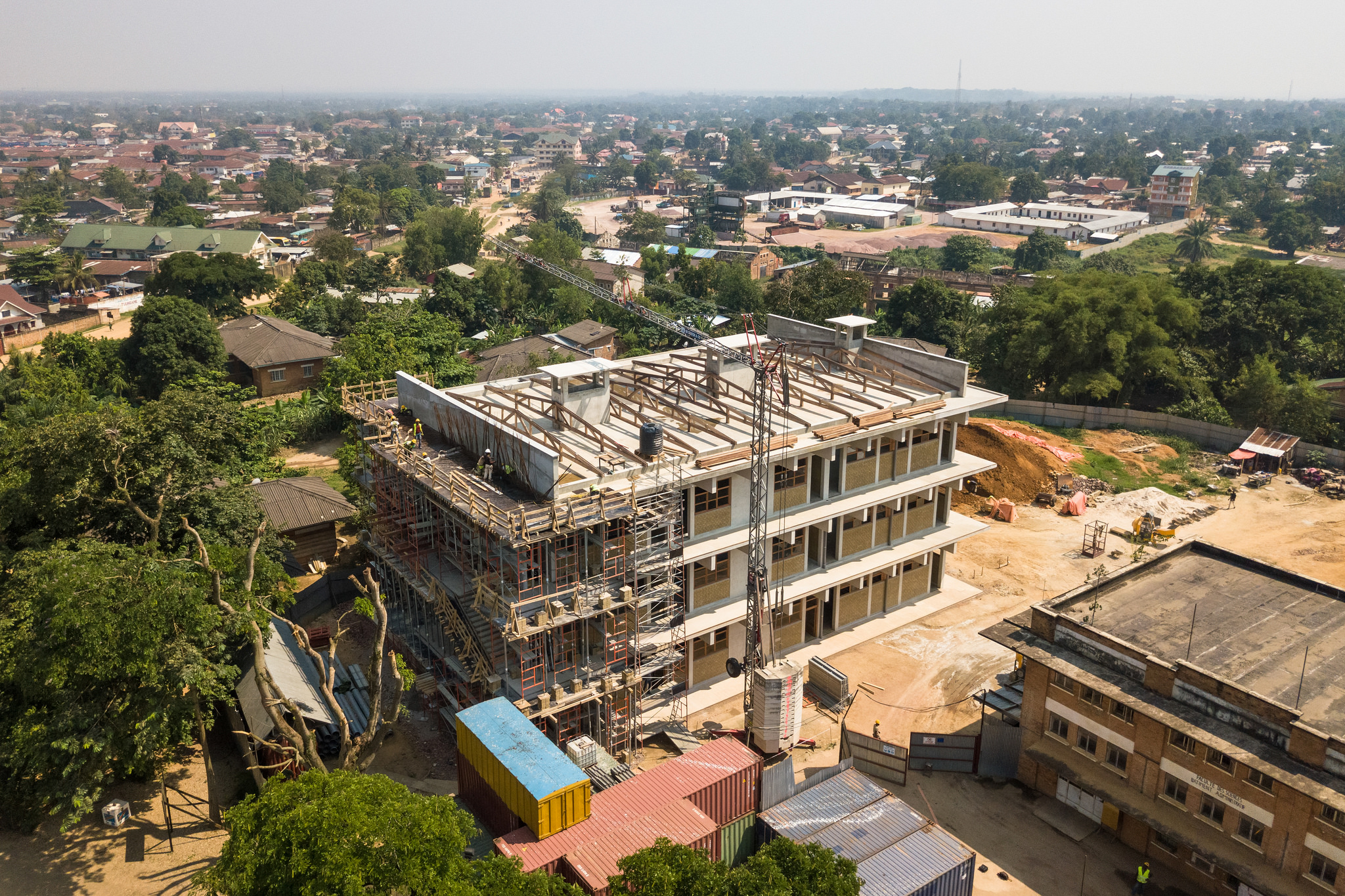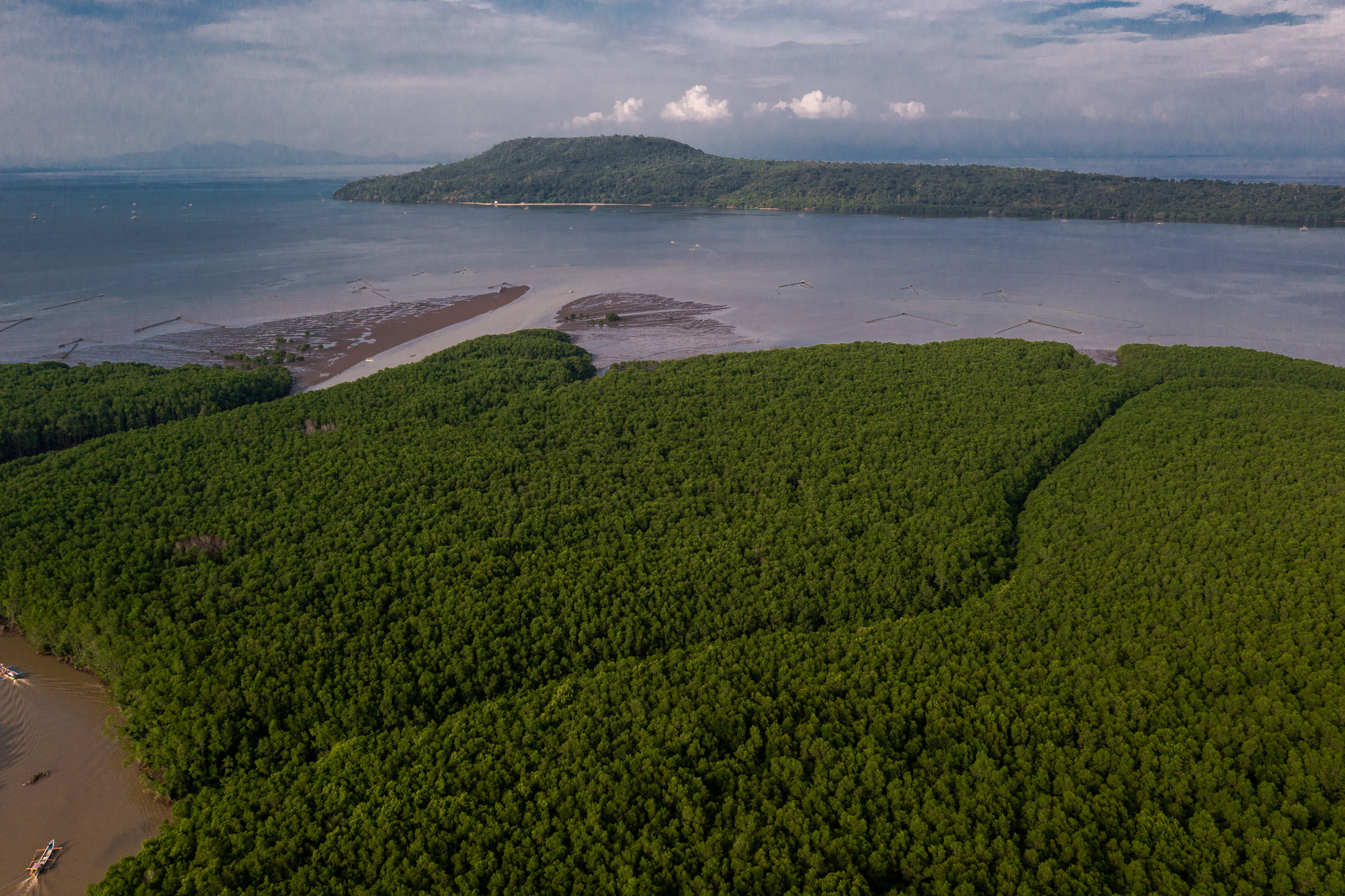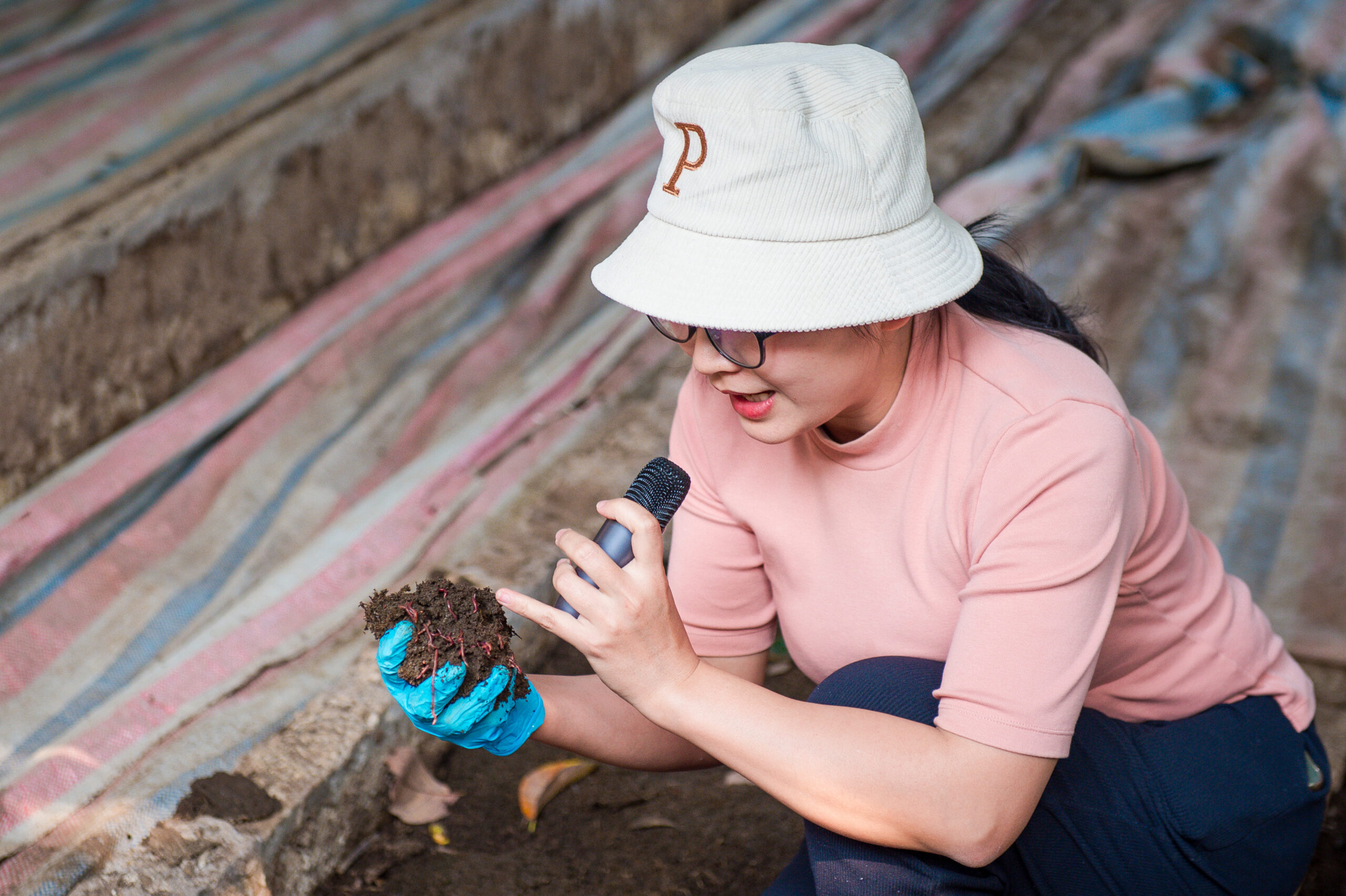All over Central Africa, it is a common sight to see worn-down buildings that appear to have been through decades of use, but in reality are only a few years old. Lack of qualified manpower in modern construction, tropical weather with extreme humidity, prevalence of low-quality construction materials and tight budgets for maintenance are frequent and difficult challenges for infrastructure’s durability and sustainability in the region.
However, a new building under construction in the northern reaches of the Democratic Republic of Congo (DRC) is overcoming these difficulties and leading the way in socially and environmentally sustainable architecture. As part of the FORETS project, led by the Center for International Forestry Research (CIFOR) and funded by the European Union, the company R&SD has partnered with the University of Kisangani (UNIKIS) to coordinate the construction of a 2,500-square-meter building on the site of the Faculty of Sciences, which will have many uses, including housing auditoriums and classrooms for hundreds of students from across the country.
The building, which is expected to be operational by January 2019, is special in many ways. First, it is designed to have a long life despite the harsh climate. “The design of the building’s roof, which is equipped with an efficient system to evacuate water, sunshades and a ventilation system, offers excellent resistance to bad weather such as heavy rain, aggressive sunstroke or very high humidity levels,” explains Quentin Ducenne, R&SD’s Managing Director and project manager.
“Our team believes that longevity in construction is a precondition for sustainability, and therefore we have ensured that we do not only source top-quality timber and other materials, but also that we use the best [building] techniques,” he adds.
To ensure the building’s durability, the project aims for construction of the highest quality.
At the beginning of the construction work, the architects realized that local workers did not have the necessary skillsets to carry out the project. The project team decided to invest in increasing local capacity, and now employs more than 40 local workers newly trained in innovative and modern construction techniques, as well as requisites like project management, safety, administration and accounting, and handling of industrial machinery. In addition, the project set up an exchange program with the local School of Public Works, giving dozens of students on-the-job training and exposure to modern construction.
“The project has taken longer than expected, mainly because we found that the local workforce was not qualified in the necessary techniques, use of tools or site management to meet our standards,” says Ducenne. “Particularly, it was hard to find good team leaders, but we were committed to create local employment, so we did not want to hire expatriates.”
Safety has been a top priority, and workers have received training of personal protection.
To create even more jobs, the construction team opted for a labor-intensive approach. For example, they chose to do manual excavation over using machinery. Both options were equally expensive, but this allowed dozens of people to work for several months – an important consideration in a region where formal employment opportunities are limited.




Belgian architecture firm Accarain-Bouillot was tapped for the building’s design, and opted for aesthetic simplicity, so as to require minimal maintenance – and energy. It does not have an elevator or air conditioning; instead, the architects opted for a sunshade system to avoid direct sunlight, coupled with a ventilation system that circulates the air. Walls are mostly made of raw, unpolished earthen bricks, which are more insulating than fired bricks or concrete blocks. “In general, the building will have a much lower footprint than other similarly-sized buildings in Central Africa,” says Ducenne.


“Part of our sustainability plan is to ensure that this building remains functional for as long as possible, and that it continues to benefit Congolese students in the years to come,” says Ducenne.
The Faculty of Sciences offers a bachelor’s degree in the sciences as well as master’s and doctorate programs in sustainable forest management supported by FORETS. But more broadly than that, as one of the DRC’s top universities, UNIKIS is in need of modern infrastructure – and in a position to lead the way in this architectural field. This project is a chance to do just that. “The authorities of UNIKIS, one of our most important partners, have been very involved since the beginning of the construction project. They are very motivated and proud of the new building, and look forward to put it in use for the benefit of their students,” concludes Ducenne.











